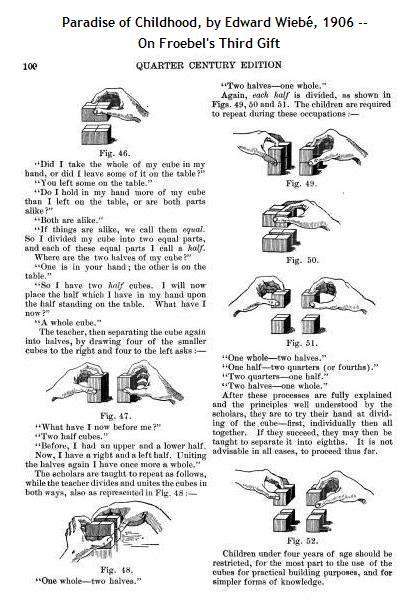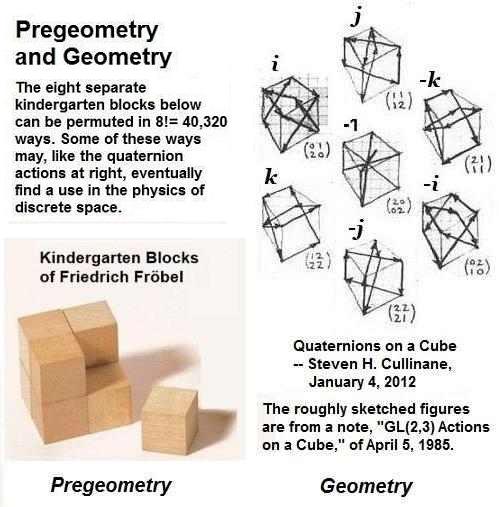The February 2012 Scientific American article "Is Space Digital?"
suggested a review of a notion that the theoretical physicist
John Archibald Wheeler called pregeometry .
From a paper on that topic—
"… the idea that geometry should constitute
'the magic building material of the universe'
had to collapse on behalf of what Wheeler
has called pregeometry (see Misner et al. 1973,
pp. 1203-1212; Wheeler 1980), a somewhat
indefinite term which expresses “a combination
of hope and need, of philosophy and physics
and mathematics and logic” (Misner et al. 1973,
p. 1203)."
— Jacques Demaret, Michael Heller, and
Dominique Lambert, "Local and Global Properties
of the World," preprint of paper published in
Foundations of Science 2 (1): 137-176
Misner, C. W., Thorne, K. S. and Wheeler, J. A.
1973, Gravitation , W.H. Freeman and Company:
San Francisco.
Wheeler, J.A. 1980, "Pregeometry: Motivations
and Prospects," in: Quantum Theory and Gravitation ,
ed. A.R. Marlow, Academic Press: New York, pp. 1-11.
Some related material from pure mathematics—
Click image for further details.

